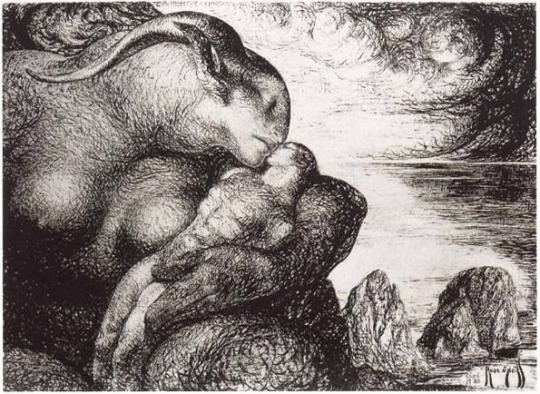Inspiration blog for a thing I’m writing. It's not a default avatar, I put makeup on it.
Don't wanna be here? Send us removal request.
Text
youtube
This is an EXCELLENT reference - and, having checked, the other-period videos on this channel are just as good.
Writing about characters putting on / taking off / wearing armour?
Check Alex The History Guy.
There are several videos showing something I've been asked - "how much armour can be put on without someone to help?"- and the answer is ""not all, but quite a bit."
I've got a few posts about how separate parts of armour seem to have been worn without the whole rig - look for "plackart" and "poleyn" to see what I'm on about.
There are other Alex videos showing how long it takes to put on various periods of armour, from a 10th century mail shirt (straight over the head like a long and very heavy T-shirt) to 15th century full plate, which is far more elaborate, starting at the feet, but still taking only 15-20 minutes from needing armour to being armoured.
(One vid has background music that's Way Off, better suited to a Dust Bowl or Civil War documentary by Ken Burns, but that's just me.)
BTW, nobody paid me / was a friend / whatever.
I just think this stuff is good.
408 notes
·
View notes
Text
Crafting A Fantasy Culture, or the fallacies of using culture in the singular
The world is an interdependent place.
A lot of Western writers will look at the need to diversify their writing and try to cherry pick outside cultures to add. They then come to us with a laundry list of questions about what they’re allowed to change about those cultures because, well, they didn’t pull from a broad enough context.
The thing about researching individual cultures is: you’re never going to be researching just one culture. You’re going to be researching all the cultures they interacted with, as well.
Cultures are made by interacting with other cultures. So you can’t simply plop a singular culture into a fantasy world and expect it to work. There is too much outside influence on that culture for you to get a holistic picture by researching the culture in isolation.
Instead, you need to ask yourself, “what environments made them, and how much of their surrounding contexts do I need to add to my fantasy world to make this genuine respectful representation?”
And before you say that you can’t possibly do that, that is too much research, let me introduce you to the place you’re already doing it but don’t realize:
Stock Fantasy World 29
Aka, fantasy Europe.
It gets ragged on a lot, but let’s take a minute to look at the tropes that build this stock fantasy world.
Snow
4 seasons
Boars, pigs, wolves, dogs, pine trees, stone
Castles
Sheep
Knights
A king
Farming based economy
Religion plays a pretty big role in life
All fairly generic fantasy Europe tropes. But if you look more closely, you’ll notice that this is painting a picture of Fantasy Germany/the Netherlands, with perhaps a dash of France and/or England in there, all of it vaguely Americanized (specifically the New England area) because there’s usually potatoes and tomatoes. The geographic region is pretty tight, and it just so happens to mesh with the top three superpowers of upper North America, and arguably the English speaking world.
But let’s keep going.
They import stuff. Like fine cloth, especially silk, along with dyes & pigments
These things are expensive from being imported, so the nobility mostly have them
There’s usually a war-mongering Northern People invading places
If brown people exist they are usually to the East
There might be a roaming band of nomadic invaders who keep threatening things
There is, notably, almost no tropical weather, and that is always to the South if it’s mentioned
There might be an ocean in the South that leads to a forgien land of robed people to survive a desert (or did I just read too much Tamora Pierce?)
And, whoops, we have just accidentally recreated European history in its full context.
The Northern people are Norse, and their warring ways are indicative of the Viking Invasion. The imports hint at Asia, namely the Ottomans and India, and the silk road. The roaming invaders are for Mongolian Khanate. The ocean and tropical weather in the South hints at Spain, Greece, and the Mediterranean. And the continent of robed people indicates North Africa, and/or Southwest Asia.
Suddenly, stock fantasy world 29 has managed to broad-strokes paint multiple thousands of years of cultural exchange, trade, wars, invasions, and general history into a very small handful of cultural artifacts that make up throwaway lines.
Europe As Mythology And You
European history is what’s taught in Western classrooms. And a lot of European history is painted as Europe being a cultural hub, because other places in the world just aren’t talked about in detail—or with any sort of context. Greece and Rome were whitewashed; the Persian and Ottoman empires were demonized; North Africans became the enemy because of their invasion of Spain and the fact many of them were not-Christian; the Mongolian Khanate was a terrible, bloodthirsty culture whose only goal was destruction.
But because all of these parts did interact with Europe and were taught in history class, writers crafting a fantasy Europe will automatically pull from this history on a conscious or subconscious level because “it’s what makes sense.”
The thing is, despite people writing European fantasy subconsciously recreating European history, they don’t actually recreate historical reality. They recreate the flattened, politically-driven, European-supremacist propaganda that treats every culture outside of Europe as an extra in a movie that simply exists to support Europe “history” that gets taught in schools.
As a result of incomplete education, a lot of people walk away from history class and believe that cultures can be created in a vacuum. Because that’s the way Europe’s history was taught to them.
Which leads to: the problem with Fantasy World 29 isn’t “it’s Europe.” It’s the fact it’s an ahistorical figment of a deeply colonial imagination that is trying to justify its own existence. It’s homogeneous, it only mentions the broader cultural context as a footnote, it absolutely does not talk about any people of colour, and there’s next to no detailing of the variety of people who actually made up Europe.
So writers build their Fantasy World 29 but they neglect the diversity of religion and skin tone and culture because it’s unfamiliar to them, and it was never taught to them as a possibility for history.
While “globalization” is a buzzword people throw around a lot to describe the modern age, society has been global for a large portion of human history. There were Japanese people in Spain in the 1600s. Polynesians made it to North America decades if not centuries before Columbus did. There are hundreds more examples like this.
You can absolutely use fantasy to richen your understanding of Europe, instead of perpetuating the narratives that were passed down from victor’s history. People of colour have always existed in Europe, no matter what time period you’re looking at, and unlearning white supremacist ideas about Europe is its own kind of diversity revolution.
Travel is Old and People Did It Plenty
Multiculturalism is a tale as old as time. And while some populations were very assimilationist in their rhetoric, others were very much not. They would expand borders and respect the pre-existing populations, or they would open up networks to outsiders to become hubs of all the best the world had to offer. Even without conscious effort, any given place was building off of centuries of human migration because humans covered the globe by wandering around, and people have always been people.
Regardless, any time you have a group of people actively maintaining an area, they want to make travelling for themselves easier. And the thing about making travelling for yourself easier is: it made travel for outsiders just as possible. By the time you reach the 1200s, even, road, river, and ocean trade networks were thriving.
Sure, you might be gone for a year or three or five because the methods were slow, but you would travel. Pilgrimages, trade routes, and bureaucratic administrative routes made it possible for people to move around.
And also, soldiers and war did really good jobs of moving people around, and not all of them went back “home.” Hence why there have been African people in England since the Roman empire. When you have an empire, you are going to take soldiers from all over that empire; you aren’t going to necessarily pull from just the geographic region immediately surrounding the capital.
Yes, the population that could travel was smaller than it is now, because land needed to be worked. But Europe isn’t the be all end all in how much of its population needed to be in agriculture in order to function; the Mughals, for example, had 80% of their population farming, compared to over 90% for Europe in the same time period. That’s an extra 10% of people who were more socially free to move around, away from their land. Different cultures had different percentages of people able to travel.
This isn’t counting nomadic populations that relied on pastoralism and horticulture who didn’t actually settle down, something a lot of history tends to ignore because cities are easier to discuss. But nomadic populations existed en masse across Eurasia, and they took cultural traditions all over the continent.
Just because it wasn’t fast doesn’t mean it didn’t happen. And just because a lot of Europeans couldn’t travel because of the agricultural demands of the continent, doesn’t mean every other culture was as tied to settlements.
Multiculturalism and Diffusion
While each individual culture is unique, and you can find pockets of difference anywhere, cultures exist on a sliding scale of broad customs across the globe. Greece and Turkey will have more in common than China and England, because the trade routes were much closer and they shared central rulership for multiple hundreds of years.
This is why we keep saying it’s important to keep cultures with other cultures close to them. Because those are the natural clusters of how all of the cultures involved would be formed. The proper term for this is cultural diffusion, and it happened all the time. Yes, you could get lots of people who had their own unique customs to set themselves apart. But they had the same natural resources as the dominant group, which meant they couldn’t be completely and totally alien.
Even trade influence wouldn’t produce the same results in two places. When Rome imported silks from China, they rewove them to be a different type of fabric that was lighter and more suited to their climate. Then the Romans sold the rewoven silk back to China, who treated it differently because they’d woven it the first way for a reason. They didn’t talk to each other directly because of how the Silk Road was set up at the time, either, so all they had were the goods.
And people automatically, subconsciously realize this whenever they write Fantasy World 29. They put like cultures with like cultures in Europe. Because even if they weren’t really taught to see the rest of the world as anything more than a footnote, they still transfer those footnotes to their fantasy.
The problem is, people don’t realize the gradient of customs. In the modern day, Greece and Turkey are different countries, with histories that are taught in totally different frameworks (Greece as an appropriated white supremacist “ancient land” that all Western European societies are descendent from, Turkey as a land of brown people that were Muslim and therefore against the Good Christian Europe), so it’s really easy to ignore all of their shared history.
People often fought for the right to rule (or even exist) in a place, which deeply impacted the everyday people and government. Ancient Persia is a fantastic example of this, because it covered huge swaths of land and was a genuinely respectful country (it took over a deeply disrespectful country); had it not been for Cyrus the Great deciding that he would respect multiculturalism, the Second Temple wouldn’t have been rebuilt in Jerusalem.
You can’t homogenize an area that was never homogenous to begin with. Because there was a ton of fighting and sometimes centuries-old efforts to preserve culture in the face of all this fighting (that sometimes came with assimilation pressure). Dominant groups, invading groups, influencing groups, and marginalized groups have always existed in any given population. See: Travel is Old above. See: people have always been people and wandered around. Xenophobia is far, far older than racism ever will be, because xenophobia is simply “dislike of Other” and humans love crafting “us vs them” dynamics.
This lack of unity matters. It’s what allows you to look at a society (especially one with a centralized government) and see that it is made up of people that are different. It leads you to asking questions such as:
Who was persecuted by this group?
Did the disliked group of people exist within their borders, or were they driven away and are now enemy #1?
What was their mindset on diversity?
How did they handle others encroaching on what they saw as their territory?
People do different things across different households, let alone hundreds of miles away. You wouldn’t expect someone from a rich, white area of California to behave the same way as someone from a middle-class immigrant neighbourhood from NYC. I’m sure, if you looked at your own city, you would scoff at the concept of someone mistaking your city for one five hours away, because when you know them, they’re so different.
So why do you expect there to be only one type of person anywhere else?
Cultural and Geographic Context Matters
A region’s overreacting culture (either determined by groups of people who mostly roam the land, or a centralized government) and their marginalized cultures determine the infighting within a group, even if the borders remain the same.
Persecution and discrimination are just as contextual as culture. Even if the end result of assimilation and colonialism was the same, the expectations for assimilation would look different, and what they had been working with before would also look different. You can’t compare Jewish exile from various places in Europe with Rromani exiles in Europe, and you definitely can’t compare them with the Hmong in Southeast Asia. They came from different places and were shaped by different cultures.
A culture that came from a society that hated one particular aspect of them will not form—at all—if they’re placed in a dominant culture that doesn’t find their cultural norms all that persecution-worthy. And the way they were forced to assimilate to survive will play into whatever time period you’re dealing with, as well; see the divide of Jewish people into multiple categories, all shaped by the resources available in the cultures they stayed in the longest.
You can’t remove a culture’s context and expect to get the same result. Even in a culture that doesn’t wholesale have an assimilationist agenda, you can still get specific prejudices and scapegoats that happen when there’s a historical precedent in the region for disliking a certain group.
Once you start cherry picking what elements of a culture to take—because you’ve plunked the !Kung into Greece and need to modify their customs from the desert to a tropical destination —you’re going to end up with coding that is absolutely positively not going to land.
Coding is a complex combination of foods, clothing, behaviour/mannerisms, homes, beliefs, and sometimes skin tone and facial features. A properly coded culture shouldn’t really need any physical description of the people involved in order to register as that culture. So when you remove the source of food, clothing, and home-building materials… how can you code something accurately from that?
And yes, it’s intimidating to think of doing so much research and starting from 0. You have to code a much larger culture than you’d originally intended, and it absolutely increases the amount of work you have to do.
But, as I said, you are already doing this with Europe. You’re just so familiar with it, you don’t realize. You can get a rundown of how to code the overarching culture with my guide: Representing PoC in Fantasy When Their Country/Continent Doesn’t Exist
Takeaways
Writers need to be aware of diversity not just as a nebulous concept, but as something that simply exists and has always existed. And the diversity (or lack thereof) of any one region is a result of, specifically, the politics of that region.
Diversity didn’t just exist “over there”. It has always existed within a society. Any society. All societies. If you want to start adding diversity into your fantasy, you should start looking at the edges of Fantasy World 29 and realize that the brown people aren’t just stopping at the designated border and trading goods at exactly that spot, but have been travelling to the heart of the place for probably a few hundred years and quite a few of them probably liked the weather, or politics, better so they’ve settled.
Each society will produce a unique history of oppressing The Other, and you can’t just grab random group A and put it in societal context B and expect them to look the same. Just look at the difference between the Ainu people, the anti-Indigenous discrimination they face, and compare it to how the Maori are treated in New Zealand and the history of colonialism there. Both Indigenous peoples in colonial societies on islands, totally different contexts, totally different results.
If random group A is a group marked by oppression, then it absolutely needs to stay in its same societal context to be respectful. If random group A is, however, either not marked by being oppressed within its societal context and/or is a group that has historically made that move so you can see how their situation changed with that move, then it is a much safer group to use for your diversity.
Re-learn European history from a diverse lens to see how Europe interacted with Africa and Asia to stop making the not-Europe parts of Fantasy World 29 just be bit parts that add flavour text but instead vibrant parts of the community.
Stop picking singular cultures just because they fascinate you, and place them in their contexts so you can be respectful.
~ Mod Lesya
7K notes
·
View notes
Text
writing advice for characters with a missing eye: dear God does losing an eyes function fuck up your neck. Ever since mine crapped out I've been slowly and unconsciously shifting towards holding my head at an angle to put the good eye closer to the center. and human necks. are not meant to accommodate that sorta thing.
84K notes
·
View notes
Text



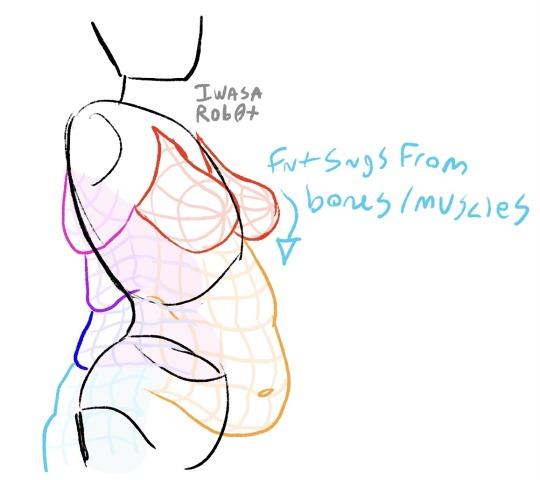

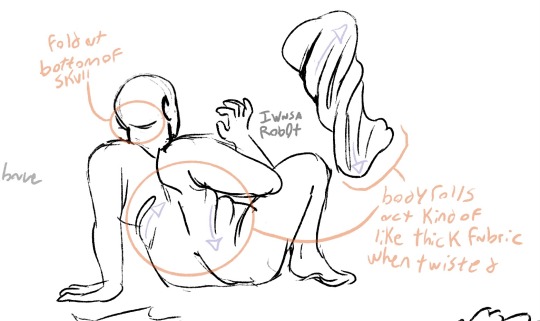
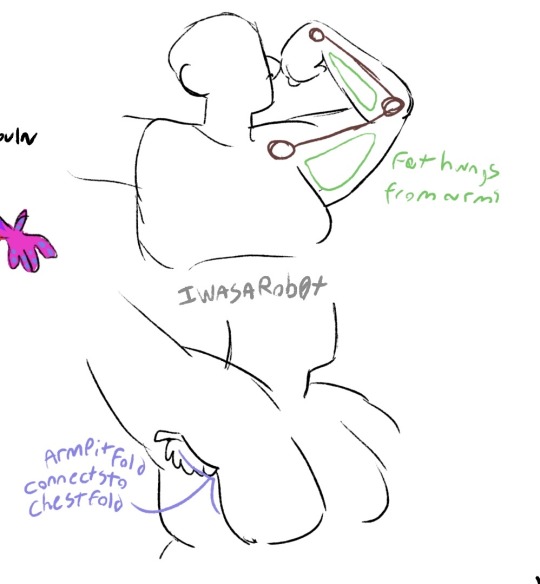



hey these are some tips for some of the little details in drawing fat folks that some people might not know!
everyone has fat on their bodies so its a worthwhile skill to have, but most art tutorials leave it out. heres some other good tips from artists!!
38K notes
·
View notes
Photo


Smooching notes~!
So the people on Twitter seemed to find my notes very useful, So I am sharing them to you guys as well
have fun!
95K notes
·
View notes
Text
Understanding Roman Legend

Capitoline She-Wolf with Romulus and Remus by DreamerAIandMore,deviantart.com
Numitor, king of Alba Longa, was dethroned and taken prisoner by his younger brother, Amulius, who, after killing his nephews, forced his niece Rhea Silvia to enter the temple of the Vestal Virgins so that she could not have offspring. But the god Mars and Rhea Silvia fell in love. Mars fathered the twins Romulus and Remus.

Mars and Rhea Silvia (1617) by Rubens. Liechtenstein Museum
Amulius, fearing that he would have two rivals in the future, ordered the newborns to be killed. The man in charge of the infanticide did not dare to do it but he placed the babies in a basket and left them to their fate in the Tiber River. The current carried the basket to a swamp called Velabrum, between the Palatine and Capitoline hills.
In the cave known as Lupercal they were suckled by a she-wolf called Luperca. According to Plutarch in 'Parallel Lives: Romulus', Luperca was the sacred animal of Mars.
Shortly afterwards they were found by the shepherd Faustulus, who was working for Amulius, so he knew very well who those babies were. He decided to secretly care for the children together with his wife Acca Larentia.

The Shepherd Faustulus bringing Romulus and Remus to his wife. Nicolas Mignard (1654) Dallas Museum of Art.
When they grew up did he reveal his true identity to them and they decided to do justice. They killed Amulius and freed their grandfather from prison, who was reinstated on his throne.
Why sons of Mars and not of another god or a king?


Mars was the god of war, virility, violence, passion and courage: all these attributes was the essence of Ancient Rome.
Furthermore, if Romulus had been the son of a man, even of a king or a great warrior, he would have been an ordinary man, with royal lineage or prestige but a man like any other. That was a clear message for the Romans: they were not like the others, and their army was not one among many.
Why a she-wolf?

The first food was not mother's milk or the milk of a tame animal but of a fearsome predator; A powerful message to the Romans about who they were, where they came from and where they should go. Engendered by the war, fed by ferocity; Their duty was to always be aggressive and feared by their enemies. Roman soldiers remembered at every step: “ We are sons of Mars and the Capitoline she-wolf”. And Rome, like the she-wolf called Luperca, was also capable of protecting its allies.
The foundation of Rome

The twins left their hometown of Alba Longa as they wanted to rule without overthrowing their grandfather. Romulus wanted to build a new city called Rome on the Palatine Hill, but Remus wanted to call it Remoria on the Aventine Hill. They decided that whoever saw the most vultures would win the dispute. Remus saw six and Romulus twelve.
According to tradition, Romulus founded Rome by drawing its sacred border on the evening of 21 April 753 BC. On that day, he killed his twin brother Remus, guilty of having crossed the sacred border in arms.
So the Romans should not have been horrified by violence, for it had been present in Rome from the very day of its founding. Even before the birth of its founder, violence had already begun within his own family.
Why a story about twins? Why didn't they say that Romulus was an only child, if he was the only founder of Rome?

Romulus and Remus (1615) by Rubens. Capitoline Museums
The fact that they were twins, and not an older and a younger brother, was to make it clear that the god Mars was the father of both, and that they were 100% brothers. Romulus and Remus represent all of Rome.
The fratricide committed by Romulus had often been evoked as a violent sign of the necessary unity of royal power. Later, this story taught that, for the good of Rome, civil wars could be fought, as many as necessary. Although the reality was that each civil war was not for the good of Rome, but for the personal ambitions.

Romulus and Remus. Silver didrachm (6.44 g). c. 269–266 BC. Photo: Curtius http://creativecommons.org/licenses/by-sa/3.0/
87 notes
·
View notes
Text
when i got my medical certificate i very confidently answered the question "what do you do if a person becomes unconscious?" with "remove from the room immediately" only to be met with puzzled silence by the instructor and that's when i learned that the deeply ingrained nautical fear and grim reality of seamen and their rescuers asphyxiating in enclosed spaces due to build up of toxic gas or especially lack of oxygen does not translate to land.
41K notes
·
View notes
Text

For those not in the know, this is one of the Amanita mushrooms referred to as a Destroying Angel. Never, ever, ever, ever forage with an app. Especially for mushrooms.
138K notes
·
View notes
Text







Green Semi-slug (Ibycus rachelae), family Helicarionidae, endemic to Borneo
Semi-slugs have small partial shells that are either partially or completely covered by part of the mantle.
photographs: Menno Schilthuizen, Albert Kang, terraincognita96, Tropenschnecken.ch, Nick Volpe
1K notes
·
View notes
Text
Rereading the Lord of the Rings series recently, and it's so fascinating to me how much the series is a denial of the typical juvenile power-fantasy that is associated with the fantasy genre.
Like, the power-fantasy is the temptation the Ring uses against people It tempts Boromir with becoming the "one true king" that could save his people with fantastic power. It tempts Sam with being the savior of Middle Earth and turning the ruin that is Mordor into a great garden. It tempts Gandalf and Galadriel with being the messianic figure of legend who brings salvation to Middle Earth and great glory to herself.
The things the Ring tempts people with are becoming the typical protagonists of fantasy stories that we expect to see. and over and over we see that accepting that role, that fantasy of being the benevolent all-powerful hero, is a bad thing. LotR is about how power, even power wielded with benevolent intent, is corrupting.
And its so fascinating how so much of modern fantasy buys into the very fantasy LotR denies. Most modern fantasy is about being that Heroic power-fantasy. About good amassing power to rival evil. But LotR dares not to. It dares to be honest that there is no world where anyone amasses that power and remains good.
I guess that's one of the reasons its so compelling.
26K notes
·
View notes
Text
So the other night during D&D, I had the sudden thoughts that:
1) Binary files are 1s and 0s
2) Knitting has knit stitches and purl stitches
You could represent binary data in knitting, as a pattern of knits and purls…
You can knit Doom.
However, after crunching some more numbers:
The compressed Doom installer binary is 2.93 MB. Assuming you are using sock weight yarn, with 7 stitches per inch, results in knitted doom being…
3322 square feet
Factoring it out…302 people, each knitting a relatively reasonable 11 square feet, could knit Doom.
285K notes
·
View notes
Text
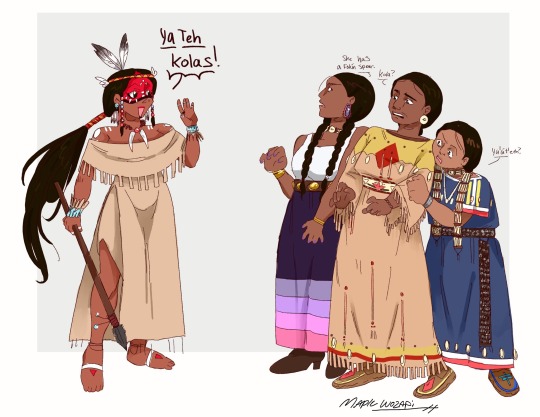
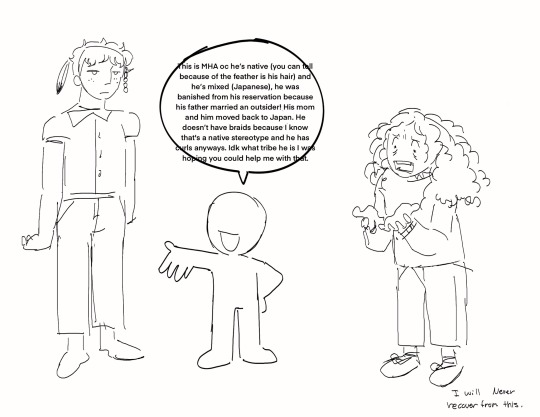
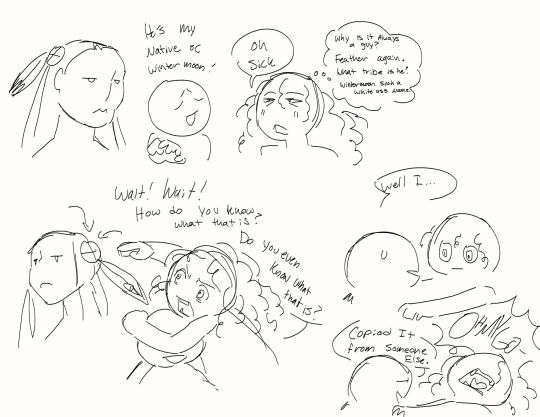
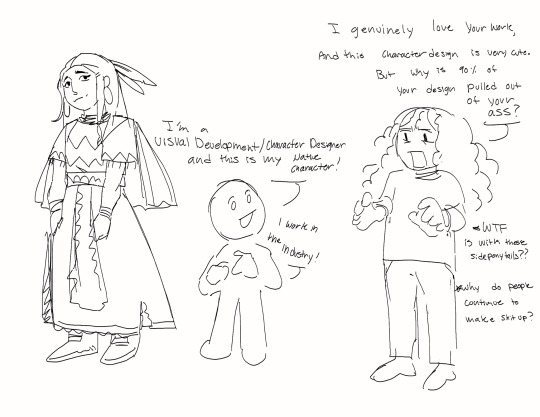
I genuinely feel like I’m going insane sometimes
60K notes
·
View notes
Text
Making Huizhou inksticks (徽墨), famous for its high quality.
Notes:
The characters OP pressed into the inksticks are 山白, OP's username
The "internal heat" referred to in the video is a term in Traditional Chinese medicine referring to a cause of inflammation, swelling, twitching, etc.
[eng by me]
26K notes
·
View notes


